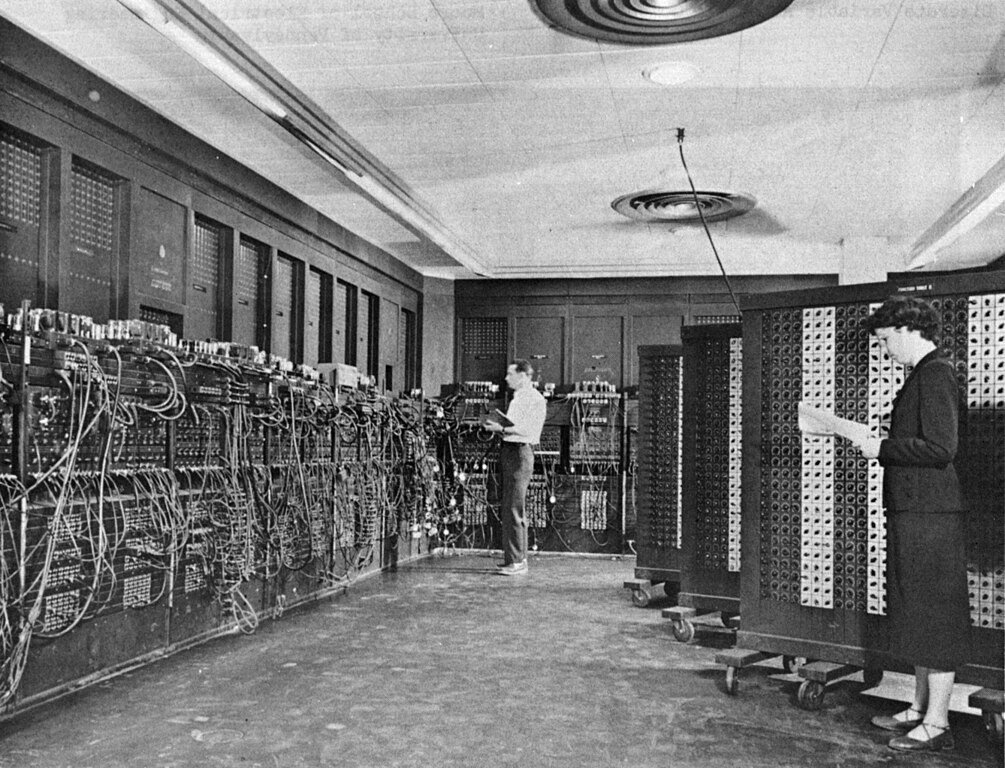How
the first programming
language was created
How was the first programming language created?
Computers have become an integral part of our everyday lives – they control cars, smartphones and even household appliances and coffee machines. As we have been teaching computers what to do for a long time, very few of today’s developers have experienced the beginnings. So it’s fair to ask the question:
How did we originally manage to communicate with computers even though they speak a completely different language to us?

The primal language of machines: Binary
At their core, computers only understand 0 and 1.
Everything we know of software today – texts, images, videos or complex calculations – is translated into switching states by computers. A current flows or it does not flow. Quantum computers could change this dramatically. But that’s a topic for another blog.
Early computers such as the ENIAC (1940s) still had to be programmed directly with these binary codes or via cable connections and switches. This was not efficient. And if a mistake was made, the search was usually very long.
From machine code to assembly languages
It quickly became clear that people needed a layer of mediation between their thinking and the binary code.
The first step was the development of assembly languages.
This was the first time that the program to be executed was stored in the computer’s memory. To make the whole thing more efficient, the hexadecimal system was used as the first step. This made it possible to write a byte with just two characters instead of eight.
Shortly afterwards, abbreviations such as ADD (add) or MOV (move data) were added alongside numbers and letters.
This was a huge step forward because it made programs more readable and reusable. However, it was still the case that humans had to come as close as possible to the machine in terms of language.
The birth of higher programming languages
In the 1950s, the next revolution emerged: higher programming languages.
Instead of working close to machines, developers should be able to write in a language that was closer to human thinking.
Examples of the first generation:
- FORTRAN (1957): Developed for scientific calculations.
- LISP (1958): For symbolic computation and the incipient research on artificial intelligence.
- COBOL (1959): Specially designed for business applications.
These languages made it possible for the first time for people to write instructions in a more comprehensible form, while compilers and interpreters translated them into machine code.
Why this development was so important
The emergence of programming languages was the decisive step in turning computers from pure calculating machines into tools for all areas.
It was only through languages that software development became scalable:
- More people were able to program, even without in-depth knowledge of binary code.
- Projects became more complex and were still manageable.
- The error rate and development time were drastically reduced.
Conclusion
The path from the first switches and binary codes to modern programming languages shows: Every generation of languages is a bridge between man and machine.
What began with simple commands such as ADD has evolved into powerful languages such as Python, Java or Rust – which in turn inspire new generations of developers.
And who knows? Perhaps the future of programming languages will no longer be written in lines of code – but in natural language or even through direct interaction with AI systems.